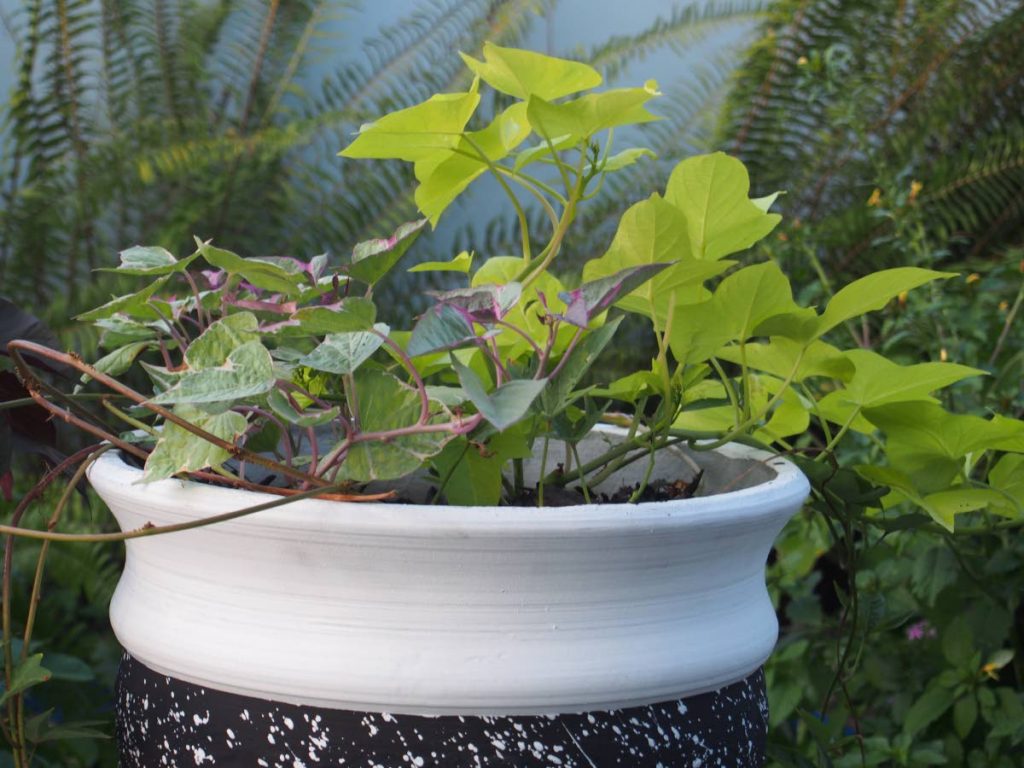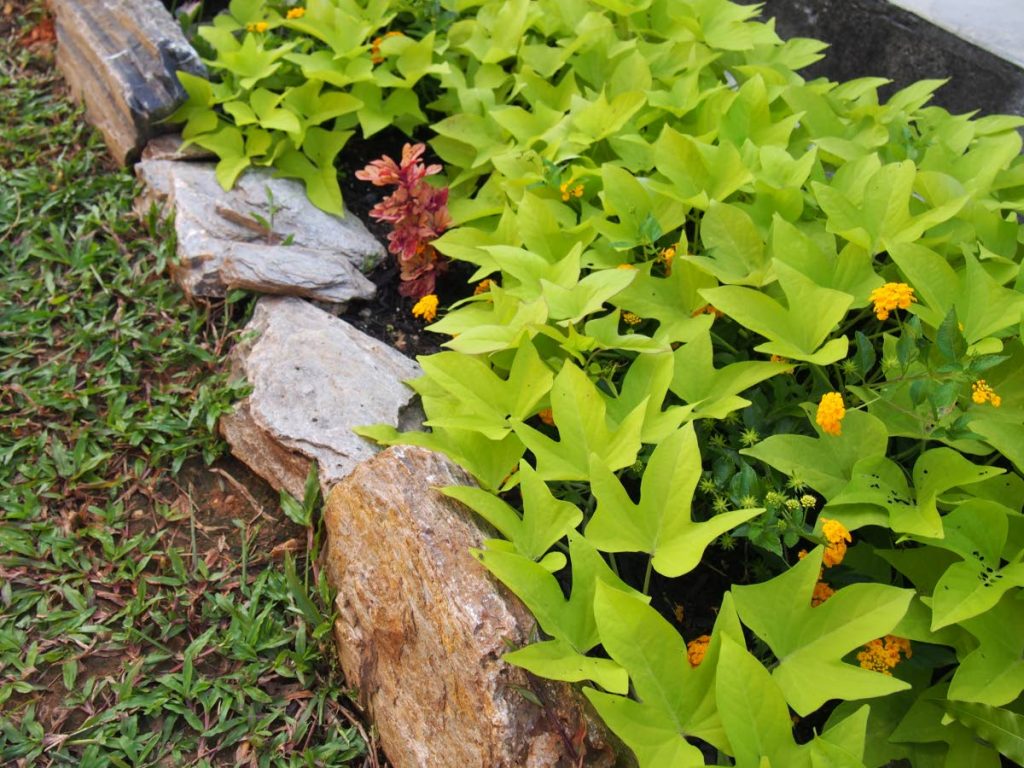How sweet potatoes got their groove back

Gordon Alert
With the rave over their colours and vigorous climbing habit, from running ground covers to flowing cascades, ipomoea batatas (sweet potatoes) have found a new groove. Languishing in the hot sun as a mono-crop or an intercrop covering rows of beds in a far flung field, are all things of the past, as sweet potatoes have taken centre stage in the most stunning of garden spaces.
Whether your garden is large or small, a verandah or a tiny apartment space, sweet potatoes can be potted to bring transformation in the most extravagant ways. Selected for its vibrancy of colours including light green, dark purple, purple-tinged variegated and various greens in different shapes, sweet potatoes, grown ornamentally, can be found adorning the edges of lawns as a ground cover or as flowing cascades off mounted pots and wall trellises to enhance privacy. Interestingly, they all produce edible tubers.
One can say that sweet potato has simply been reunited with its genus, ipomoea, better known for their strong binding vines and floral blooms across the world as morning glory. Their kinship is shown in the similarity of appearance of their flowers.

Native to the tropical Americas, sweet potatoes are ironically called yams in North America but in fact they bear no relationship to yams. Another conundrum of their naming is that sweet potato is not a nightshade and therefore not related to the potato. Potato belongs to the solanaceae family which includes tomato, sweet pepper and egg plant.
Sweet potato is a sturdy, fast growing vine that is completely free of burrs and thorns. When planted in loamy, free-draining soils, it runs freely, sending out “branches” of vines along the ground whose roots store food in small tuber-like structures. Typically a single sweet potato will weigh between a few ounces to about three pounds.
Apart from adorning gardens most beautifully, sweet potatoes make an unlikely but easy crop for potted gardens. Whether you have a patio, the edge of a verandah, a carport or a full backyard, sweet potatoes make a very effective low maintenance crop. It loves plenty of sunshine but cannot stand waterlogging. This is likely to cause root rot and decay in a short space of time.
No need for the digging associated with heavy clays on a plot of land in the countryside; simply stick cuttings into your raised bed or flower pot. Technically, they need about 12 inches of soil depth, but there are many instances where the tubers are produced in far less. The first crop comes in at about seven to nine months after planting. With judicious digging and removal of the red tubers, the vine can remain virtually undisturbed and hence continue to produce new tubers throughout the year.

Sweet potato is a nutritional champion. Its tubers are naturally sweet and a rich source of complex carbohydrates, dietary fibre and vitamin A as beta carotene. It also contains vitamin B5, vitamin B6, and manganese.
When grown in potting mixes with lots of aeration and a crumbly tilth a healthy plant will produce tubers of comparable size to those grown in the fields.
As a vibrant runner, sweet potato produces lots of leaves. These offer a quick source of several nutrients such as vitamin B, beta carotene, iron and zinc as the leaves can be lightly sautéed to make the most delightful bhagi.
For further information contact the Eastern Horticultural Club at 357-5033, or 720-2698 or easternhorticultural@hotmail.com


Comments
"How sweet potatoes got their groove back"